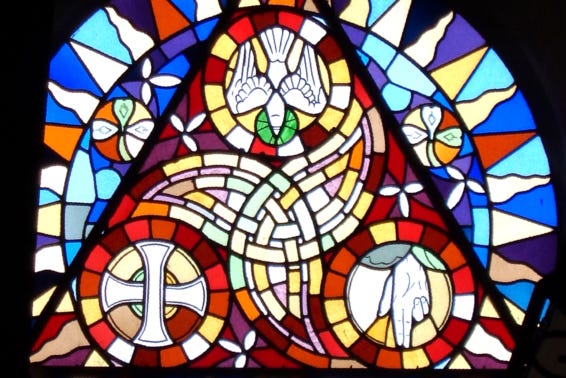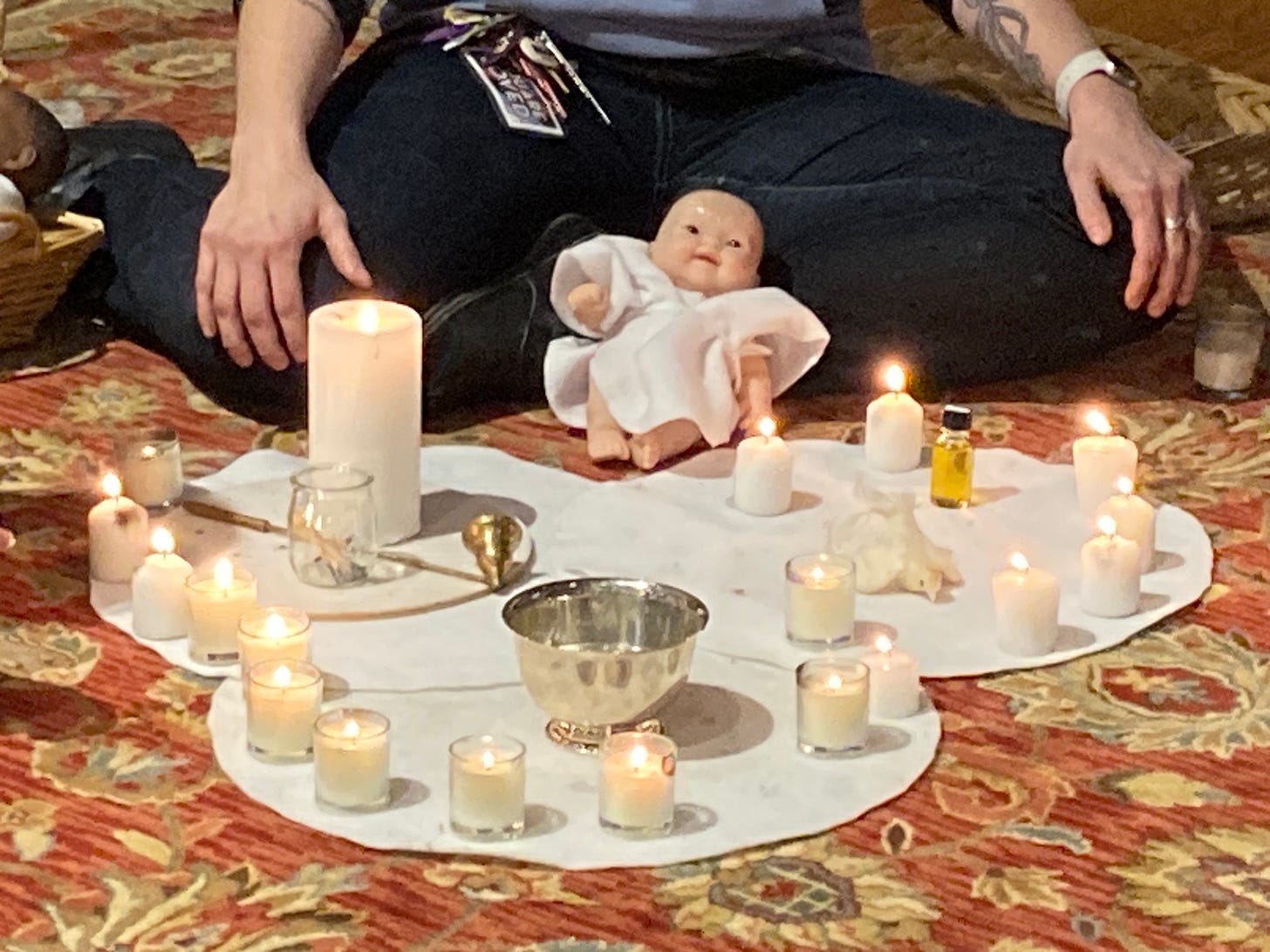Dear Friends,
It’s almost everyone’s favorite day: Trinity Sunday! You know the one – when clergy are all just doing their best not to commit heresy.
Now, as we’ve established here, I didn’t go to seminary. I did, however, go to graduate school at a university that included a seminary, and one of the two classes I wandered over to seminary/religious studies space for was a class on Trinitarian Theology. It was probably one of my favorite classes. There was just something about the puzzle of it all, the arguments over details most people have never considered. What do you do with questions of “proceeding from” or “of one substance” in our day-to-day faith?
The Father, The Son, & The Holy Spirit
Did you know that Godly Play has a lesson about the Holy Trinity?
Most people will never hear it because it’s a BIG story. It takes the story of Creation and sets it alongside the Faces of Easter and then Paul’s Discovery.
And THEN it takes the three white, circular underlays from Baptism to unite these stories.
It may not seem like the most obvious set of stories at first, specifically the choice of Paul’s Discovery, but when you sit with it for a moment, the elements become clear. Here are the fruits – the Father’s hand in Creation, in which Jesus and the Holy Spirit are also present because they are beyond and outside of time. The Incarnation, God on Earth in human form. Paul’s letters and travels –which are so substantially about his transformation through the intervention of the Holy Spirit. It’s all there.
And yet, I often think of the story of Baptism as the better Trinity lesson. There is something about that first motion – spreading out the overlapping circles as I say, “We baptize people in the name of the Father and the Son and the Holy Spirit” – that grounds me in that core belief. Only to be confronted by a particular set of question that has followed me around this year:
Is Jesus God?
Is God alive?
What is the Holy Spirit?
My group of third graders, in particular, are deeply grappling with questions of the Trinity over these last six months or so, and it’s hard to make space, amidst a lesson, amidst the whole group, to address this challenge. They’ll move up to “big kid” Sunday School next year, when I’ll probably begin with the stories that make up the Holy Trinity in Godly Play.
How do you talk about the Trinity? What questions does that generate?
Among the fundamental challenges that come with talking about the Trinity with children, there are a few things we do in our language as the church that make our work as explainers and explorers more difficult. Think about some of the things we say.
Jesus is the Son of God.
Okay, cool. Well, I’m the daughter of Diane, but that doesn’t mean I’m also Diane. But Jesus is ALSO God. So that doesn’t make much sense. Jesus is the Son of God and also Jesus is God.
To be a little more theologically technical, the Father, the Son, & the Holy Spirit are three persons but one substance. There are a dozen failed metaphors for this – water in its liquid, gas, and solid forms. Apples with their skin, flesh, and core. None of them are quite right because nothing is like God. Any parallel presents things askew.
If Godly Play relies on a discovery model of learning, then the Trinity in some ways stands outside of that. It’s hard to talk about the Trinity without being didactic, without simply saying, y’know, this is what we believe collectively and you should know that. You can ask questions about it, but the starting point may need to be a set of theological facts. As much as I resist such direct teaching, I’m starting to think I’ll be having the same circular conversations about the Trinity for the next several years if I don’t.
Diving Deeper
I’m still cultivating resources this struggle around teaching the Holy Trinity but among the tools I turn to are:
New Directions for Holy Questions by Anita Peebles and Claire Brown. This book is a powerhouse primer for key theology questions. Again, it’s going to demand some direct teaching, but I absolutely trust Peebles and Brown on that front.
Storymakers NYC has The Apostles Creed in their Faith Guides for Littles, as well as well as their Teen Zine vol. 1 on The Faith. I actually think these resources hit either side of the New Directions audience – their Apostles Creed Faith Guides for younger kids and the Teen Zine for the older set.
This older article from Grow Christians on talking to teens about the Trinity – and why it’s important to remember that we don’t have all the answers – is a reassuring take on this struggle.
St. Brendan’s Episcopal Church in Sewickley, PA has a great blog post about images of the Trinity. Moving from the traditional Shield of the Trinity and Triquetras to St. Patrick’s Shamrock, it hews close to the basic premises while offering a few different angles.
Just because this coming Sunday is Trinity Sunday, I won’t pretend I’m going to solve this problem today – or even by Sunday. And maybe I shouldn’t be trying to solve it at all. I’m just so excited that these wonderful, beloved kids want to understand these great questions of our faith. They’re hungry for it, but it’s a feast of unfamiliar foods and it will take time.
What has shed light on the Trinity for you? How do you bring this puzzle to your community?
Peace,
Bird





